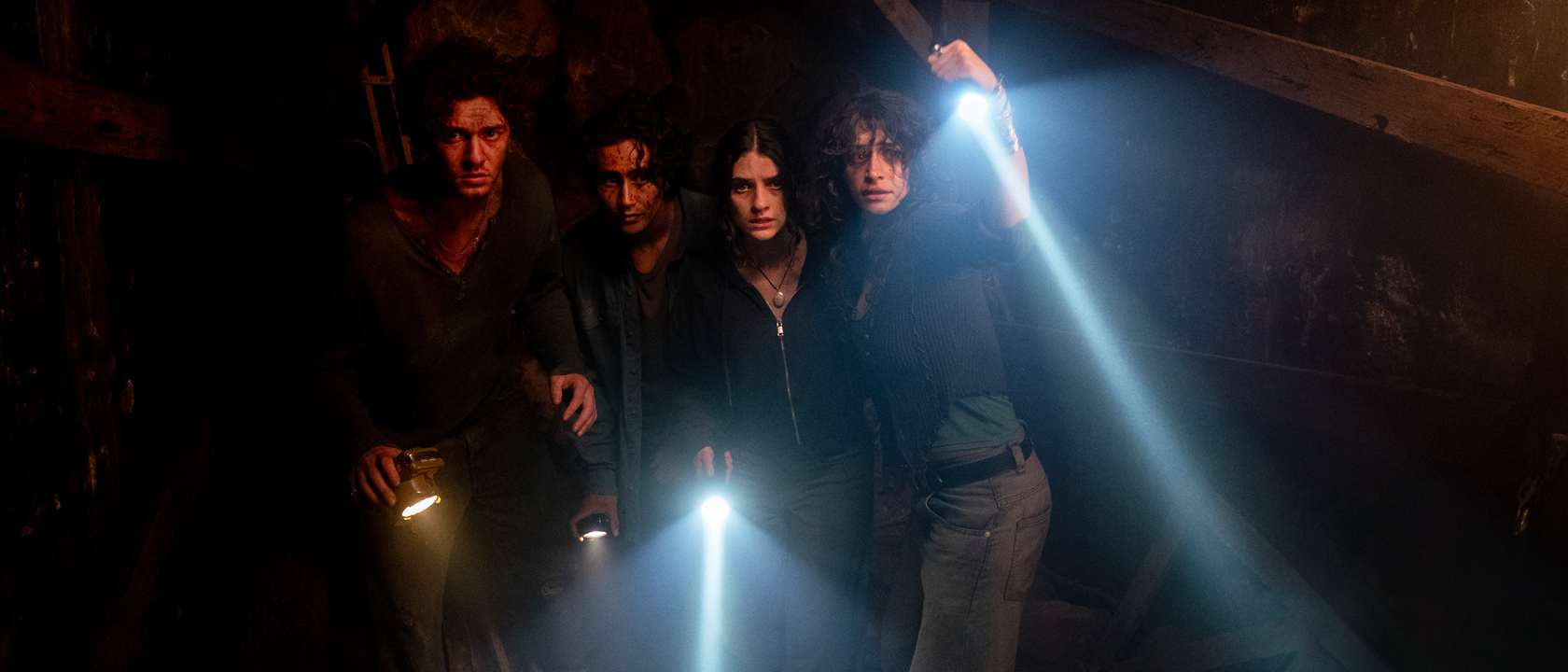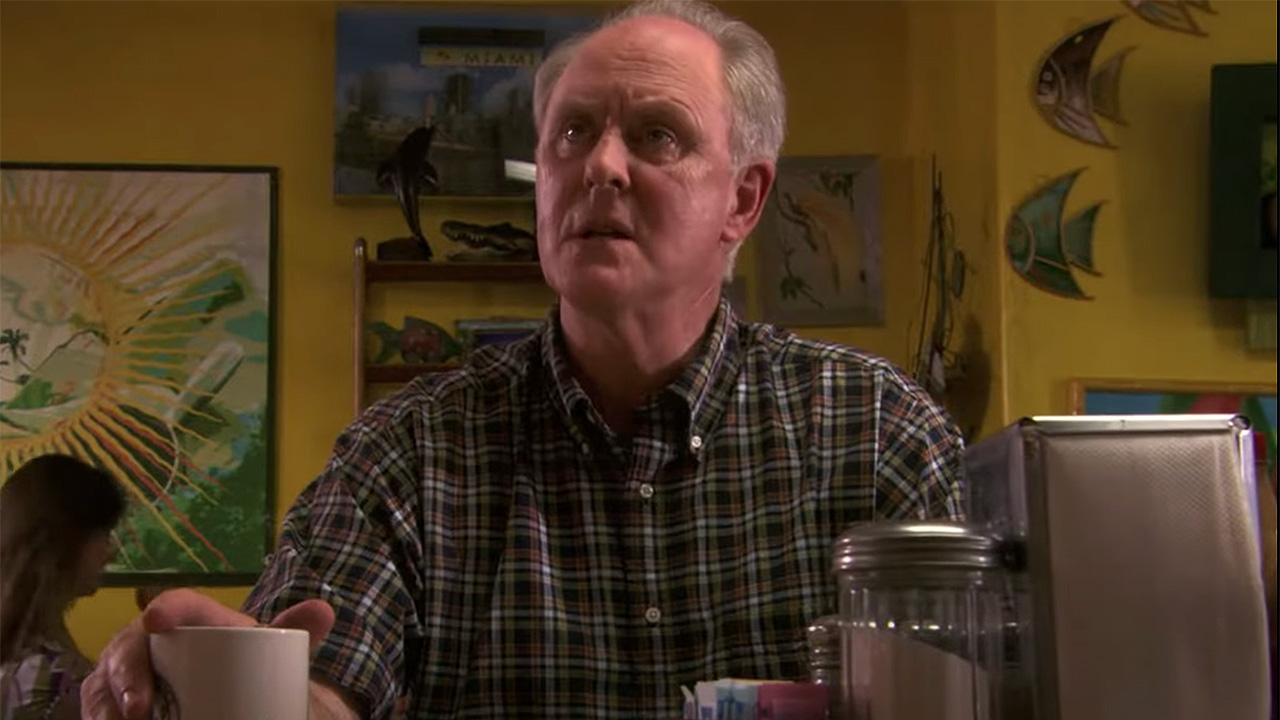One of the interesting things about the DVD format is that as classic movies are released, you discover what’s good, and what’s overrated. With the release of George Lucas’s first film THX 1138, I’ve discovered just how overrated a science fiction movie can be, and how few people have actually seen it. There are two schools of thought on THX 1138. There are the people who think it’s sheer genius, depicting a dystopian future rife with political commentary and cultural satire. Then there’s the people who wonder what George Lucas was smoking when he came up with this movie, and what Francis Ford Coppola was thinking when he not only allowed, but encouraged Lucas to proceed with the picture. Then there are a bunch of people who are aware of THX 1138, but haven’t seen the film at all which means there’s actually a third camp (we call them the lucky ones). By now you can guess which camp I fall into, having been pulled from the “ignorance is bliss” category into the wild world of “What the hell is this?”
There’s really not an aspect of THX 1138 that doesn’t cause some question to pop up in the mind of the viewer. THX (Robert Duvall) lives in a future society where everyone takes drugs to suppress emotions. Why take the drugs? Why live like this? Why not have real names instead of letters? We don’t know. Out of nowhere THX’s spouse/roommate LUH 3417 (Maggie McOmie) starts altering the drugs THX takes so he starts to feel again. Why does she do this? How did she break free from the drug’s hold herself? We don’t know. THX is approached by a mysterious stranger, SEN 5241 (Donald Pleasence) who has observed the changes in THX and wants to become THX’s new roommate - which isn’t gay because there’s no sex in this future; the men are milked by machine. Why? We don’t know. Since in this future everything is monitored, it isn’t long before the love between LUH and THX is observed, and the two are arrested. As there’s no visible government, how is it decided to punish these two star crossed lovers? We don’t know. Eventually THX escapes with the help of SEN and SRT (Don Pedro Colley) who, despite looking like everyone else, is apparently a hologram. Why? We don’t know. The three find themselves on the run, attempting to “escape” - escape what and go where? (Say it with me) We don’t know.
I wish that was a joke or an exaggeration, but it’s really not. Lucas doesn’t so much tell a story, as he puts images on the screen. They are really cool looking futuristic images, but there’s no rhyme or reason to them, and the only reason they move along in any form of a story is because we are told they do. We aren’t told why, and we aren’t shown why, we’re just supposed to be dazzled by the bleak futuristic imagery and accept it. Sorry, that just doesn’t work for me. Don’t get me wrong, I’m usually very critical of films that spell everything out for the viewer. I love movies that give you just enough information to understand what’s going on in their environment (like the sea faring world of Master and Commander) but don’t feel the need to explain every alien phrase or item. Unfortunately THX 1138 doesn’t even give you the smallest clue as to what’s going on. Some people probably feel it adds to the “abstractness” of the piece. I say it’s lazy storytelling, and this movie foreshadows the lazy storytelling Lucas would resort to again in Star Wars: Episode I and Episode II.
Abstract or not, artistic or not, Lucas is not a good storyteller. He comes up with interesting ideas, but he doesn’t seem to know how to execute them. The film is visually interesting, with a world full of technology - dials, meters, switches, and lots and lots of numbers. Unfortunately it’s not interesting enough to keep your attention focused on the film for very long. The movie needs a story in there somewhere, and what little story is here just isn’t enough to keep a viewer hooked.
THX-1138 is a big screen version of Lucas’s film school project, which alongside John Carpenter’s Dark Star proves that film school projects should stay in film school. It also proves just how big a fluke Star Wars was, for such a great story to have been told by such a consistently poor storyteller. Either that, or it proves that a person only has to have one good idea that they can then latch their star onto for the rest of their life, in which case it was good Star Wars came along. I’d hate to see a six picture THX franchise. I’ll avoid the obvious joke about how this is the “George Lucas Director’s Cut” of THX 1138 (who else’s director’s edition would it be?) and go straight into discussing the movie. In this Director’s Cut, Lucas felt the need to tinker with this old film, no doubt in order to finish the film as he always imagined it (How painful it must be to have all these unfinished films out there making money). Unlike the “Special Editions” of Star Wars, the CGI additions actually enhance THX 1138 into a more complete world, give it definition and scale thanks to the addition of CGI hallways, or the removal of doors to give a more claustrophobic feel. Crowds and backgrounds have been digitally added to help make this feel more like a populated world then just a guy walking down a hallway. They’ve even altered Robert Duvall’s eyes so they roll back into his head during the “brain lock” which helps create tension rather then make him look like he’s just standing there.
In fact, the only use of CGI that I out and out disagree with is the addition of the CGI monkey people. Yes, you read that right: CGI monkey people. Early on in the film, when THX is in custody we see a “shell dweller” played by Lucas’s favorite non-CGI creation: a little person. Later in the film when THX encounters more shell dwellers, originally they were played by more future Ewoks and Jawas. Now they’ve been replaced by CGI monkey creatures. Why Lucas didn’t change them all, including the one in the prison, is unexplained - but hey, that’s consistent with the rest of the confusing movie, so why start explaining things now.
In fact, Lucas really doesn’t try to explain much, even in his commentary track with co-writer/sound editor Walter Murch. Lucas and Murch talk about the political commentary the film makes, How sound effects were created, and even how the humor of the movie is lost on Americans. The one thing he’s sure not to do, is explain the film. The two talk about what they intended to create with the film, and they almost come across as a science fiction version of Andy Kaufman and Bob Zmuda - they didn’t make this movie for anybody but themselves, and if they are the only ones to ever get it, that’s enough for them. Lucas comes close to an explanation when he says that he really had nothing to lose by making this abstract film, and that he wasn’t surprised when the film didn’t go over well. After all, he wasn’t planning on having a film career (he was planning on working in documentaries), so what did he care about how this picture was received? It just goes to show that Lucas had just as blatant a disregard for other people then as he does now. Today it’s the fans he screws over with revisited versions of his movies, but that’s nothing compared to how he ruined Utopia.
Utopia for Lucas and Francis Ford Coppola was a new studio, created to be the perfect haven for the new generation of movie director. Rather then work out of the old person’s Hollywood, Coppola’s Zoetrope Studios ran out of San Francisco. The documentary “A Legacy of Filmmakers: The Early Years of American Zoetrope” details the rise and fall of the Shangri-la - a rise that started with the dreams of Coppola, and a fall that was caused almost entirely by Warner Brothers’ response to THX 1138. The documentary itself is almost worth the price of the two disc set, and makes one wonder what Hollywood would be like today if the filmmakers of Zoetrope Studios had succeeded in their vision.
One of the options for the movie is to watch it with only Walter Murch’s sound effects and editing (including Lalo Schifrin’s score). It sounds like an odd way to watch a movie, but it actually makes the movie more compelling, as if you’re watching the characters through one of the observation panels - you can see them interact and watch what they’re doing, but you can’t hear them even though you can hear the world around you. It’s a pretty interesting way to watch the film, making it seem as if maybe Lucas didn’t make the movie abstract enough. It’s also a lot closer to the original concept of his student film Electronic Labyrinth THX 1138 4EB (also included on the DVD). In that version of the film, everything is seen through monitors and you only hear the authorities; THX doesn’t speak at all. I still think the concept is better as a fifteen minute short then as a full length picture though.
The other bonus materials on the two disc set include two behind the scenes featurettes. “Bald” is a “classic featurette” created at the same time as the movie, and focuses primarily on the physical and emotional process the major actors went through having their head shaved. For some like Robert Duvall, who didn’t have far to go, it doesn’t seem like much. For others, particularly the women, it seems like a rather traumatic experience. The more recent featurette “Artifact from the Future: The Making of THX 1138” gives a quick look at the creation of the movie, from casting, to filming, to post-production and the influences it’s had on other filmmakers.
THX 1138: The George Lucas Director’s Cut is a pretty good treatment of a classic science fiction movie. It is, however, a movie that isn’t for everybody. Some people will be inspired by its genius, while others will just pull a question mark and wonder what all the fuss is about, and that third lucky category will just pass by this DVD release, content to know Lucas as “the guy who created Star Wars.”
After Watching Star Wars Fans Lose It When The Maul: Shadow Lord Trailer Dropped At Star Wars Celebration, I Asked The Darth Maul Voice Actor About The ‘Edgy’ New Series
32 Amazing SNL Impressions Of Politicians
John Lithgow Admits Joining Harry Potter Was A ‘Big Decision’ (But It Had Nothing To Do With The J.K. Rowling Backlash)











